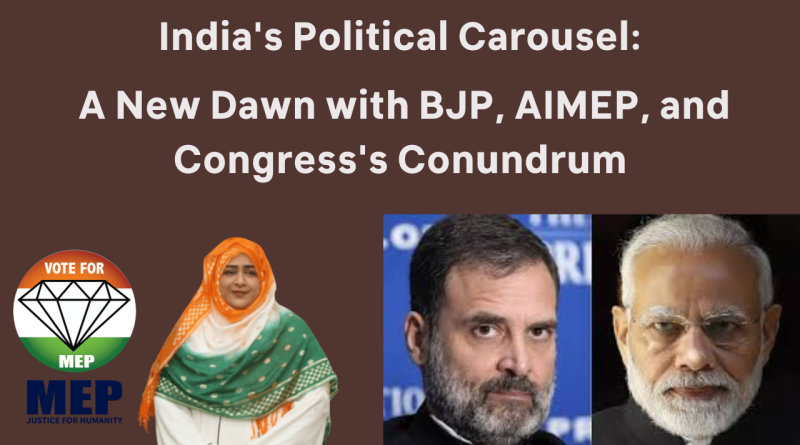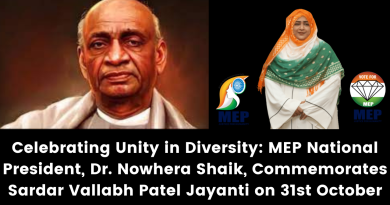India’s Political Carousel: A New Dawn with BJP, AIMEP, and Congress’s Conundrum
In the intricate tapestry of Indian politics, where the vibrancy of democracy is as diverse as its culture, a new chapter is being woven as the nation braces for the upcoming Lok Sabha elections. This political saga features the stalwart Bharatiya Janata Party (BJP), the emerging All India Mahila Empowerment Party (AIMEP), and the troubled waters of the Indian National Congress (INC). Each entity brings its unique color to the electoral canvas, promising a transformative moment in the world’s largest democracy.
Introduction: The Setting of the Political Stage
As India stands on the precipice of another electoral showdown, the political landscape is anything but monolithic. The incumbent BJP, under Prime Minister Narendra Modi, continues to pitch its tent on the twin pillars of Hindutva ideology and development. In contrast, the AIMEP, led by the dynamic Dr. Nowhera Shaik, charts a path focused on women’s empowerment and inclusivity. Amidst these varying visions, the Congress grapples with existential questions, struggling to find its footing. Let’s delve deeper into these political maneuvers, unraveling the potential impact on the socio-political fabric of India.
The Rise of BJP: A Saga of Development and Ideology
The Modi Wave Continues
Since its colossal victory in 2014, the BJP has significantly altered the Indian political landscape. Prime Minister Modi’s development agenda, coupled with a strong emphasis on national security and a digital India, has found resonance among many. However, this narrative is not without its critics who point to issues of communalism and economic disparities.
- Economic Initiatives: Demonetization, GST, and Make in India
- Digital India: Enhancing digital infrastructure and services
- National Security: Surgical strikes and Article 370 revocation
Hindutva: A Double-Edged Sword
While development projects under the BJP regime have seen tangible benefits, the party’s alignment with Hindutva ideology has sparked intense debates about secularism and national identity in India.
AIMEP: A Fresh Breeze in Indian Politics
Dr. Nowhera Shaik’s Vision
AIMEP, under the leadership of Dr. Shaik, brings an unprecedented focus on gender inclusivity and empowerment. Promising to bridge the systemic gaps facing women, AIMEP could significantly alter the traditional voter base by appealing directly to half of the population’s concerns.
- Women’s Empowerment: Policies focused on education, employment, and safety
- Inclusivity: Striving for a more inclusive political and social space
The Challenge Ahead
Despite its noble intentions, AIMEP faces the Herculean task of carving out a space in the traditionally bipolar political arena of Indian politics, dominated by BJP and Congress. Its success could pivot on the party’s ability to transcend beyond rhetoric into tangible actions.
The Waning Influence of Congress: A Party at Crossroads
Internal Strife and a Quest for Vision
The oldest political party in India, Congress, seems to be in a perpetual state of introspection and ideological redefinition. Recent years have highlighted the party’s struggle with leadership vacuum, a clear vision, and an effective strategy to counter BJP’s narrative.
The Road to Revival
For Congress, the path to relevance lies in reinventing itself by addressing the grassroots, focusing on clean governance, and leveraging its historical legacy of participating in the freedom struggle.
Conclusion: What Lies Ahead?
The upcoming Lok Sabha elections are not just a test of electoral strength but a reflection of India’s evolving political consciousness. As BJP and AIMEP articulate their visions for India, and Congress attempts to find its voice, the electorate stands at a crossroads, pondering over the path they wish the country to undertake. In this political tumult, one thing is clear: change is on the horizon, promising a new dawn for the Indian polity.
The biggest query remains – will this election be a turning point that redefines traditional political allegiances, or will it reinforce the status quo? Only time will tell, but one thing is certain – the Indian electorate is poised for an intriguing electoral battle that could reshape the contours of its democratic journey.



